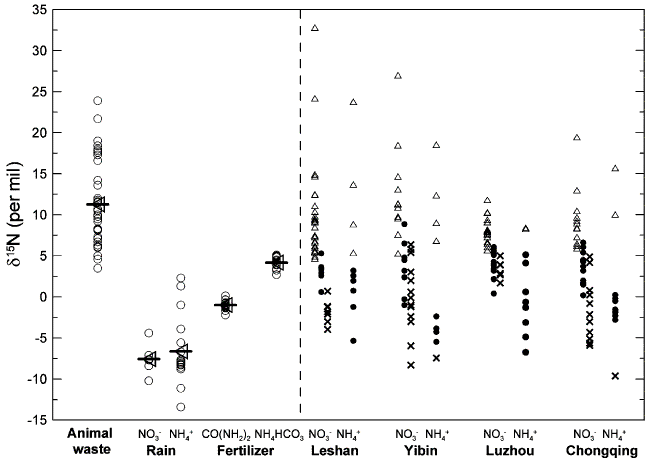
Figure 2 δ15N values of groundwater samples in the Sichuan Basin. For the δ15N values of NO3- and NH4+ of groundwater from various sites, the cross represents spring water; the open triangle and closed circle represent well water from farmyard and that from farmland, respectively. The δ15N values of animal waste and local fertilizer and rain are included for comparison. The average of each set of data is represented by a left-leaning triangle with short line. The data on animal waste are referred from Kreitler (1979), Kreitler and Browning (1983), Heaton (1986), Fogg et al. (1998), Schulz et al. (2001) and Widory et al. (2004).
〔Li,X., Masuda,H., Koba,K. and Zeng,H.(2007): Nitrogen isotope study on nitrate-contaminated groundwater in the Sichuan Basin, China. Water Air soil Pollut., 178, 145-156.から〕